Solar eclipse of January 6, 2019
| Solar eclipse of January 6, 2019 | |
|---|---|
 Map | |
| Type of eclipse | |
| Nature | Partial |
| Gamma | 1.1417 |
| Magnitude | 0.7145 |
| Maximum eclipse | |
| Coordinates | 67°24′N 153°36′E / 67.4°N 153.6°E |
| Times (UTC) | |
| Greatest eclipse | 1:42:38 |
| References | |
| Saros | 122 (58 of 70) |
| Catalog # (SE5000) | 9550 |
A partial solar eclipse will occur on January 6, 2019. A solar eclipse occurs when the Moon passes between Earth and the Sun, thereby totally or partly obscuring the image of the Sun for a viewer on Earth. A partial solar eclipse occurs in the polar regions of the Earth when the center of the Moon's shadow misses the Earth.
Images
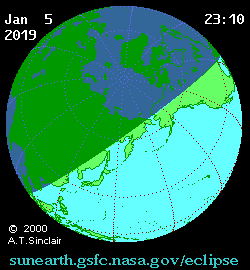
Animated path
Related eclipses
Solar eclipses of 2018-2021
This eclipse is a member of a semester series. An eclipse in a semester series of solar eclipses repeats approximately every 177 days and 4 hours (a semester) at alternating nodes of the Moon's orbit.[1]
Note: Partial solar eclipses on February 15, 2018, and August 11, 2018, occur during the previous semester series.
| Solar eclipse series sets from 2018–2021 | |||||
|---|---|---|---|---|---|
| Ascending node | Descending node | ||||
117.jpg) Partial from Melbourne, AU | July 13, 2018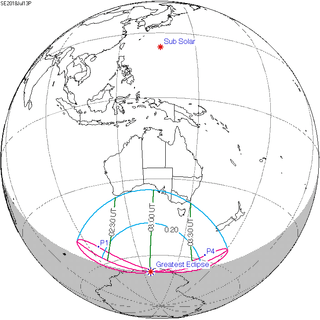 Partial |
122 | January 6, 2019 Partial | ||
| 127 | July 2, 2019 Total |
132 | December 26, 2019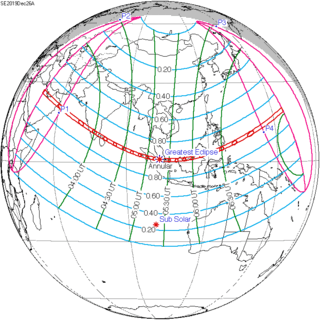 Annular | ||
| 137 | June 21, 2020 Annular |
142 | December 14, 2020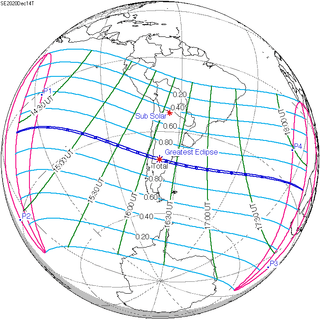 Total | ||
| 147 | June 10, 2021 Annular |
152 | December 4, 2021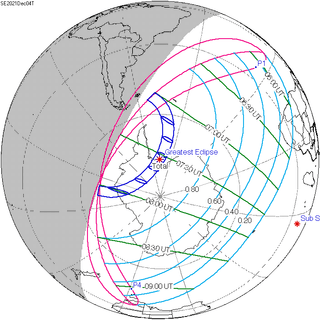 Total | ||
Metonic series
The metonic series repeats eclipses every 19 years (6939.69 days), lasting about 5 cycles. Eclipses occur in nearly the same calendar date. In addition, the octon subseries repeats 1/5 of that or every 3.8 years (1387.94 days).
| 21 eclipse events between June 1, 2011 and June 1, 2087 | ||||
|---|---|---|---|---|
| May 31 – June 1 | March 19–20 | January 5–6 | October 24–25 | August 12–13 |
| 118 | 119 | 121 | 123 | 125 |
 June 1, 2011 |
 March 20, 2015 |
 January 6, 2019 |
 October 25, 2022 |
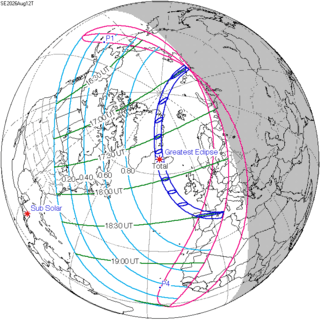 August 12, 2026 |
| 128 | 129 | 131 | 133 | 135 |
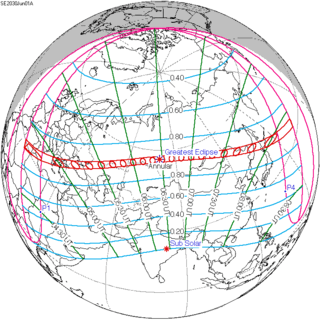 June 1, 2030 |
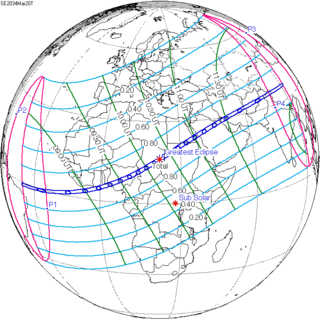 March 20, 2034 |
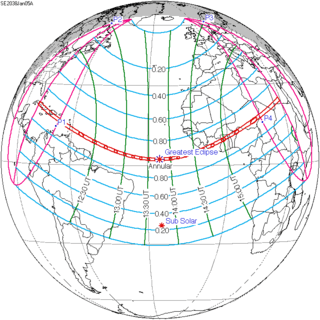 January 5, 2038 |
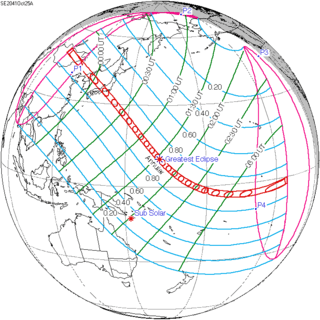 October 25, 2041 |
 August 12, 2045 |
| 138 | 139 | 141 | 143 | 145 |
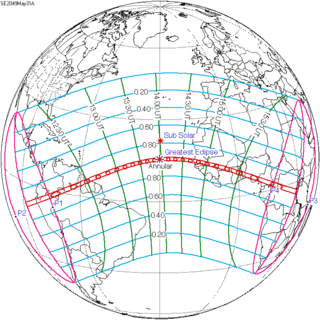 May 31, 2049 |
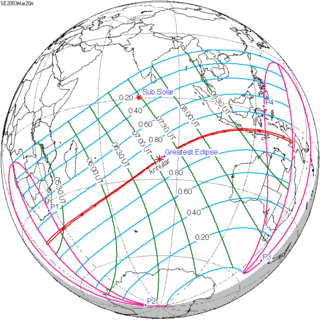 March 20, 2053 |
 January 5, 2057 |
 October 24, 2060 |
 August 12, 2064 |
| 148 | 149 | 151 | 153 | 155 |
 May 31, 2068 |
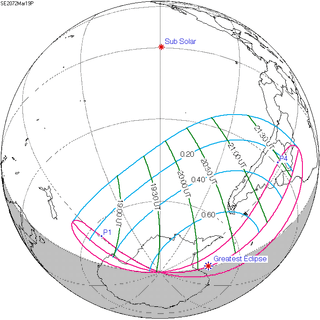 March 19, 2072 |
 January 6, 2076 |
 October 24, 2079 |
 August 13, 2083 |
| 157 | ||||
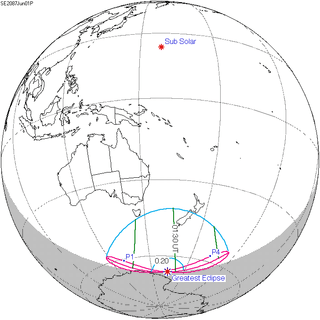 June 1, 2087 | ||||
References
- ↑ van Gent, R.H. "Solar- and Lunar-Eclipse Predictions from Antiquity to the Present". A Catalogue of Eclipse Cycles. Utrecht University. Retrieved 6 October 2018.
| Wikimedia Commons has media related to Solar eclipse of 2019 January 6. |
External links
